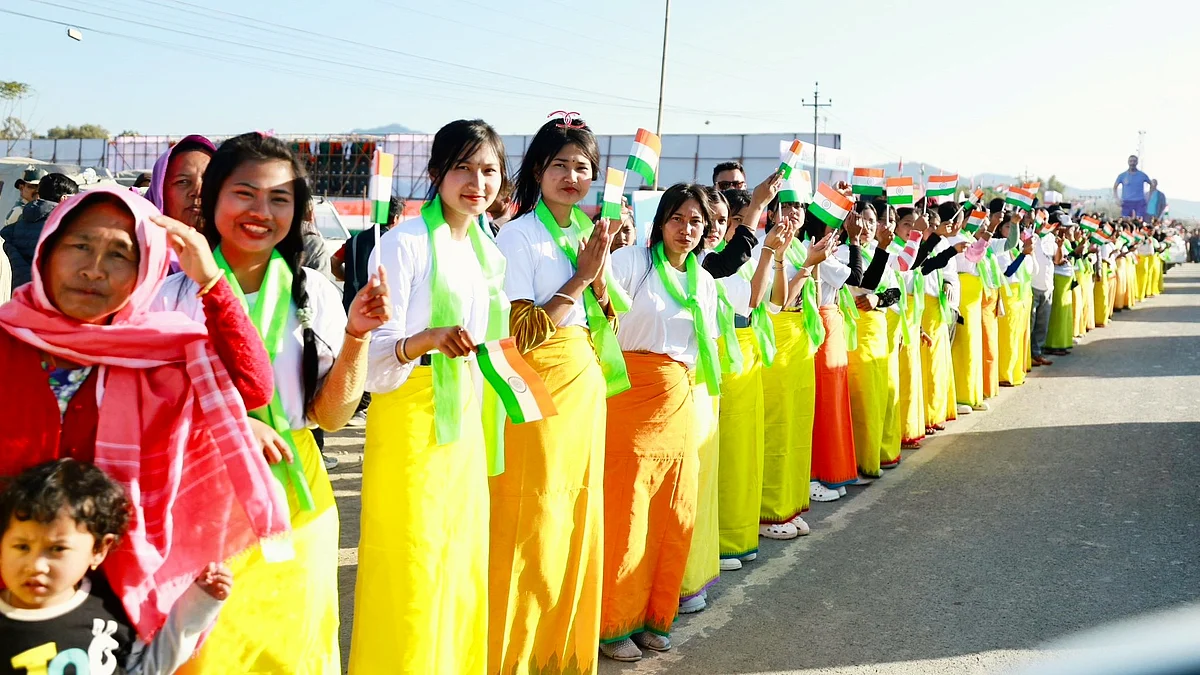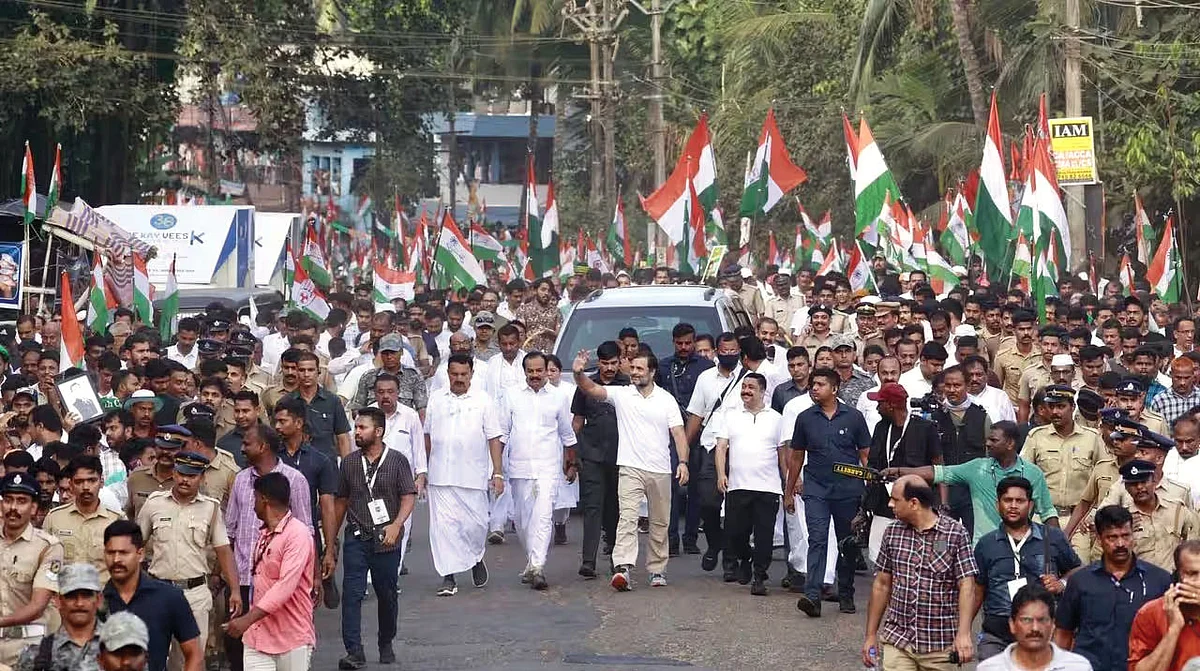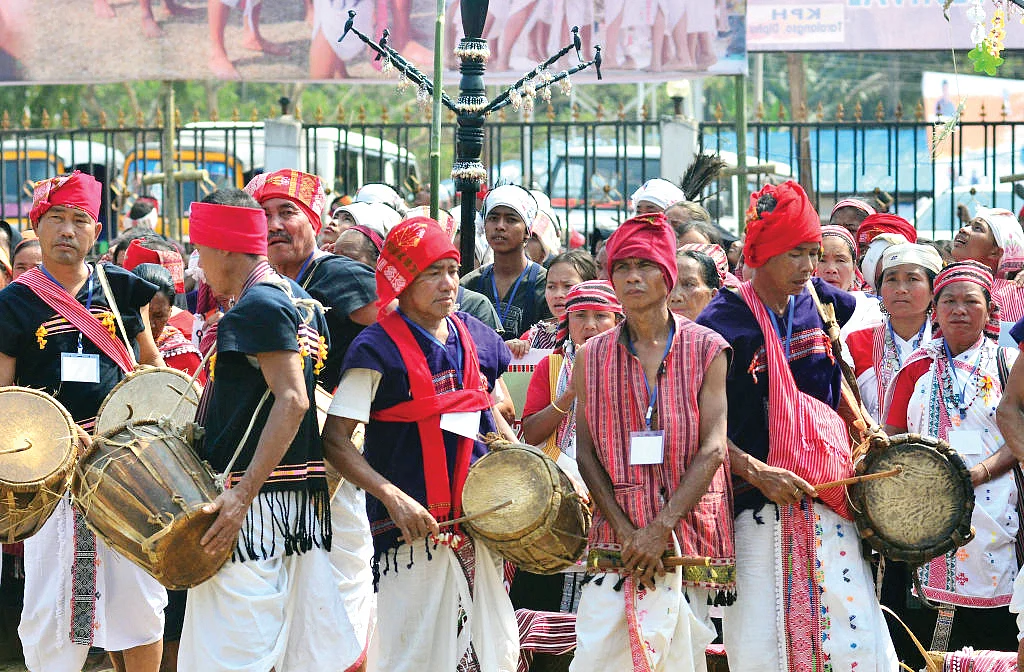North-East: Culture forms the glue in a state riven by internal borders
Congress MP Jairam Ramesh asked if the Manipur chief minister had been able to meet the prime minister even once during the past eight months

Manipur chief minister N. Biren Singh was scathing about the Manipu-Mumbai Bharat Jodo Nyay Yatra launched from Manipur on 14 January 2024. He chose the occasion of the 8th Armed Forces Veterans Day to caution the people about the yatra, reminding them of the ‘adverse effects’ of Rahul Gandhi’s earlier visit to the state in 2023 when the Congress leader had visited relief camps and met people displaced by the ethnic violence that broke out on 3 May.
“The yatra is not Bharat jodo (unite), it is Bharat todo (break) for me. Last time when Rahul Gandhi visited, he tore apart Manipur and now when Manipur is slowly getting back to normal, he has come again to tear it apart,” the chief minister said, according to a report in the Imphal Free Press.
Jairam Ramesh, MP and AICC (All-India Congress Committee) general secretary in-charge of communication, countered by asking if the chief minister had been able to meet the prime minister even once during the past eight months. "Neither has the MoS external affairs R.K. Ranjan Singh (who hails from Manipur been successful in meeting the PM. Fourteen political parties from Manipur have been seeking appointments with the Great Leader, in vain,” Ramesh said.

Not only has the PM not visited Manipur, he even cancelled his visit to Mizoram in October, lest questions be asked about visiting one sister state and not the other. The state government has failed to convene an all-party meeting to defuse the situation and find a solution, Ramesh pointed out.
Yogendra Yadav of Swaraj India described the many borders that have sprung up in the state. At every border, there are check posts — with buffer zones of 200 m in between. Each post is manned not only by the police and Assam Rifles but also by civilian members of the community, who check the identity of the travellers and prevent members of the other community from proceeding.
Even when governor Anasuya Uikey travels by road, her motorcade is stopped and checked, said Yadav. Meitei drivers get off at the checkposts and Kuki-Zo-Chin drivers waiting on the other side walk across and take the steering wheel. In the Bharat Jodo Nyay Yatra as well, Meitei leaders of the Congress and other civil society members were not allowed to cross over to the Kuki-Zo areas. Not surprising in a state where even ministers cannot travel freely.
Not about elections alone
"Politics is not just about elections," said Kanhaiya Kumar while addressing the media during a break in the Bharat Jodo Nyay Yatra in Manipur’s Senapati district. "If we see everything through the lens of votes and seats, the foundation shrinks, as does the mindset of the people. The PM has everything, including a brute majority in the Manipur Assembly as well as in the Lok Sabha. Why doesn’t he come to Manipur? The Congress has no MP in the Lok Sabha from Manipur, and yet the party feels the pain of Manipur. The yatra is a way to share the pain and make it known.
"We want to stop the tears. In a state where the aandhi (storm) of injustice is blowing, Rahul Gandhi is fighting for justice. His plea to the youth and the farmers is: ‘Don’t be afraid, don’t die by suicide, join the fight as a warrior for justice. We cannot be quiet. We must speak up. We must become nyay yodhhas (justice warriors).”
He pointed out that not a single stone was thrown at the Nyay Yatra convoy between Imphal and Senapati on the first two days because “we are the Congress, we take everyone along with us. We don’t divide on the basis of faith”.
A policed state where lawlessness rules
Manipur has one of the highest police to population ratios in the country, at least six times the national average, points out Nandita Haksar in Shooting the Sun, her recent book on Manipur.
Also Read: Maharashtra: Whose Mumbai is it, anyway?
"It is estimated that there are 1,388 policemen per hundred thousand people in contrast to the national average of just 250 per hundred thousand. In addition, about 50-odd companies of CRPF were sent to Manipur after May 2023 along with other paramilitary forces, apart from the Rashtriya Rifles which has a permanent presence... across the state," she writes.
This deployment of security personnel does not seem to have controlled the situation. Armed civilians have been running amok in the state with two ‘militant’ Meitei groups, Arambai Tenggol and Meitei Leepun, enjoying the protection and patronage of the state government.
Ominously, Pramot Singh, the Meitei Leepun chief with ABVP and Gujarat links said in a video interview, “The offensive of Meitei Leepun hasn’t yet begun. We would not stay silent when some foreigners started the aggression by intruding on our land.” That he can blithely make such statements sitting in Imphal is a commentary on the state of lawlessness in Manipur.
Crackdown on drug peddlers
The new government of Mizoram, the Zoram People’s Movement (ZPM), which took over in November, has initiated a fresh crackdown on drug peddlers, following up on their electoral pledge. The heroin that is smuggled in from Myanmar is known as SF (sunflower or shaan flower) and comes in small plastic boxes resembling soap cases. Between January and October 2023, the excise and narcotics department seized 76.22 kg of heroin as against 33.4 kg in 2022.

The urgency is driven by the grim fact that 70 lives are said to have been lost in 2023 to drug abuse — compared to 47 and 43 deaths recorded in 2021 and 2022 respectively. According to the state government, a total of 1,804 people, including 218 women, have died in the state since 1984, with heroin being the key culprit. The death toll reached an alarming level at the turn of the century, with 139 deaths reported in 2000 and 143 in 2004.
Culture binds former foes
President Droupadi Murmu’s visit, the first by an incumbent President, has put the spotlight on the golden jubilee celebrations of the Karbi Youth Festival (KYF) in Diphu, 250 km from Guwahati. Hosted at the sprawling 672-acre Karbi People’s Hall in village Taralangso, the eight-day festival began on 12 January.
The festival was conceived in 1974 to showcase the Karbi language, culture and cuisine. It coincided with the movement to adopt the Roman script, which is used today in the Dima Hasao district of Assam, Meghalaya and Arunachal Pradesh. In Kamarup district, however, the Karbis prefer using the Assamese script. The Roman script movement ran parallel to Karbi schoolgirls rejecting uniforms and attending classes in traditional attire.
The festival has evolved into a platform for fostering intra- and inter-tribe unity. Former extremists and security personnel, who fought each other earlier, are today involved in organising the festival.
Culture binds political activists and party workers as well. This year, KYF featured more than 6,000 cultural performances on four stages, while some 2,000 stalls were put up for visitors to relish ethnic cuisine and shop for traditional items. KYF organisers believe it has the potential to go global like the two decade-old Hornbill Festival in adjoining Nagaland.
Follow us on: Facebook, Twitter, Google News, Instagram
Join our official telegram channel (@nationalherald) and stay updated with the latest headlines